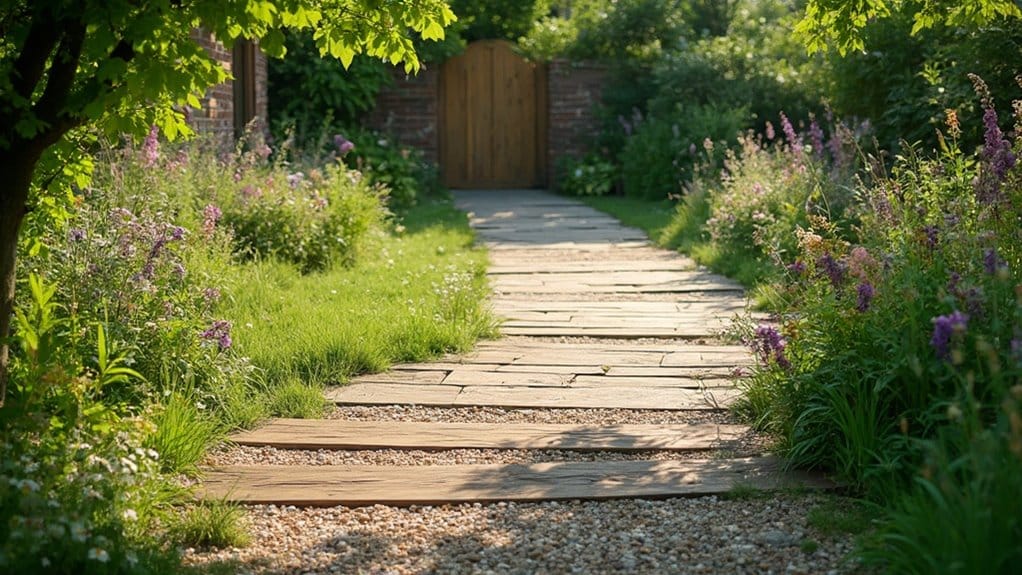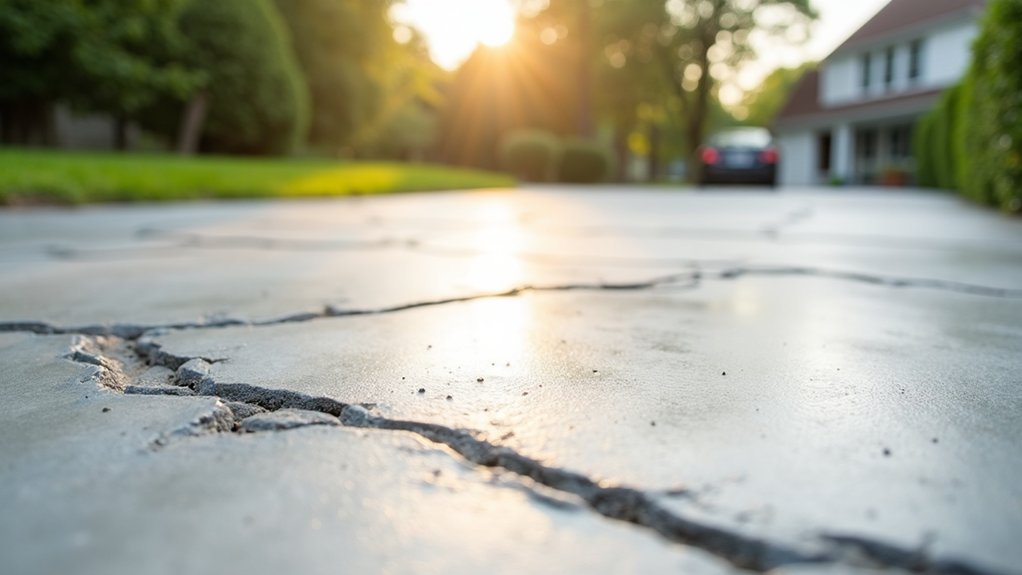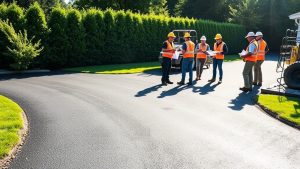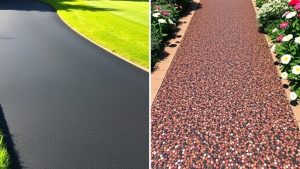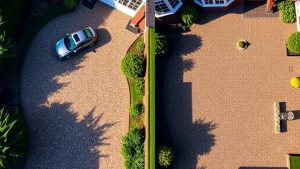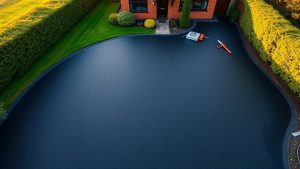When choosing between stamped and plain concrete for your driveway, consider durability, cost, maintenance, and appearance. Stamped concrete can last between 15 to 30 years with proper care, but it typically requires more maintenance and a higher initial cost. In contrast, plain concrete is generally more affordable and easier to look after, lasting around 20 to 30 years with basic upkeep. Each option has its advantages and disadvantages, so understanding these factors will help you make the right decision for your needs. Read on to discover more about the differences.
Table of Contents
ToggleKey Takeaways
- Stamped concrete comes in various designs and colours, making it visually appealing compared to the plain look of standard concrete.
- Although stamped concrete has a higher initial cost, it can offer better long-term value and enhance resale potential.
- Maintenance for stamped concrete involves resealing every 3 to 5 years, while plain concrete needs less frequent care.
- Stamped concrete is generally more durable and weather-resistant, making it suitable for high-traffic areas; however, plain concrete is simpler and cheaper to install.
- Both types need regular inspections and cleaning to prevent damage, but stamped concrete requires more attention to maintain its appearance.
Durability and Lifespan Comparison
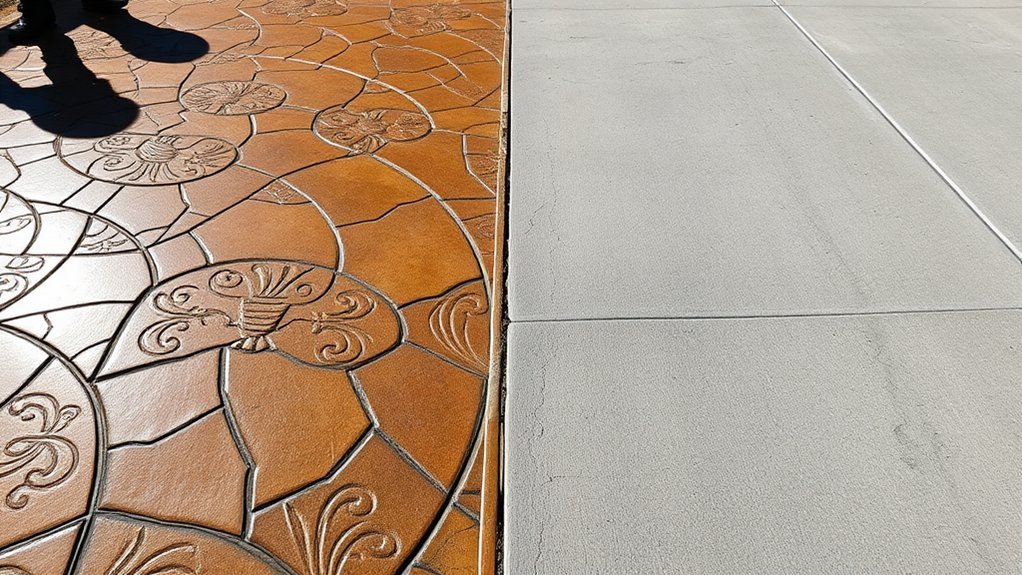
When choosing a driveway, it’s important to compare the durability and lifespan of stamped concrete with plain concrete.
Stamped concrete generally lasts between 15 to 30 years, depending on factors such as quality of installation and maintenance. If done properly and sealed regularly, it can even last over 25 years. Proper installation and maintenance are crucial for maximizing the lifespan of stamped concrete.
On the other hand, plain concrete has a lifespan of 20 to 30 years and is more resistant to surface wear, but it can crack without adequate reinforcement.
Both options require regular crack inspections and sealing. However, stamped concrete needs resealing every 3 to 5 years to keep its appearance and durability intact.
Ultimately, your choice will depend on local weather conditions, your willingness to maintain it, and the look you want to achieve.
Cost and Budget Considerations
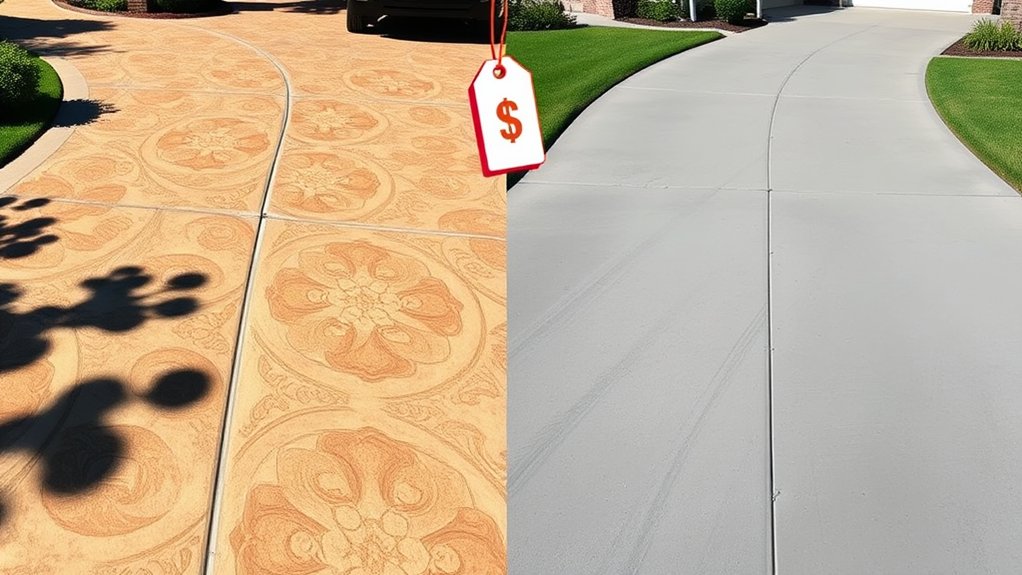
Cost is a crucial factor when choosing between stamped and plain concrete for your driveway. Understanding the differences in pricing can aid in your budget planning. Stamped concrete typically demands a higher initial investment due to its intricate designs, costing between £6 and £15 per square foot, whereas plain concrete ranges from £3 to £6 per square foot. Here’s a quick cost summary:
| Type of Concrete | Cost Per Square Foot | Average Installation Cost (6m x 6m) |
|---|---|---|
| Stamped Concrete | £6 – £15 | £3,600 – £5,400 |
| Plain Concrete | £3 – £6 | £1,800 – £3,600 |
While stamped concrete may require a larger upfront cost, it could provide long-term savings and enhance your property’s resale value. Additionally, the longevity and upkeep of stamped concrete can save money over time compared to plain concrete.
Maintenance and Upkeep Requirements
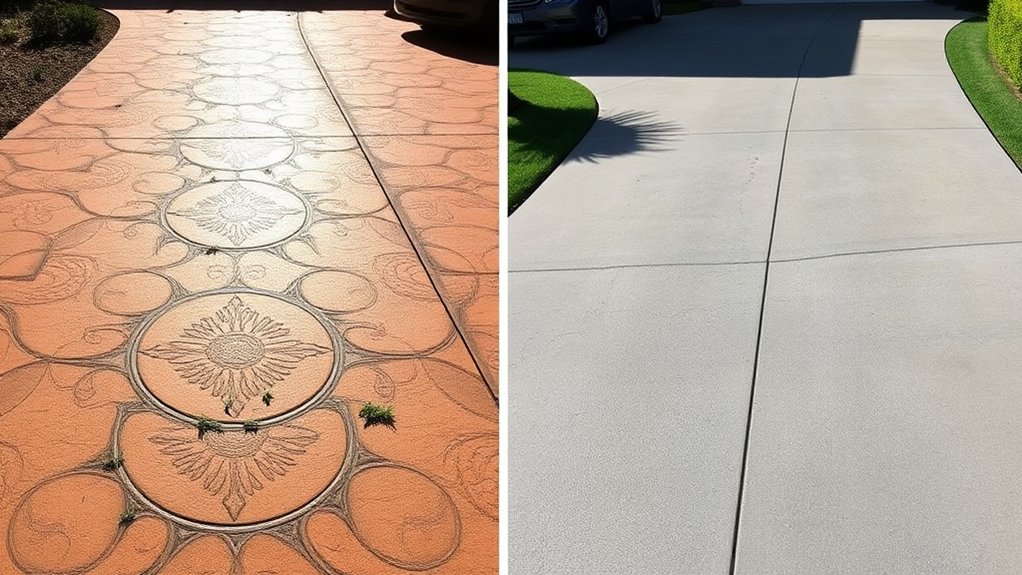
To ensure your driveway remains attractive and durable, it’s important to understand the maintenance needs of both stamped and plain concrete.
Stamped concrete requires regular sweeping or leaf blowing to remove debris and prevent surface damage, while plain concrete needs less frequent cleaning. Avoid letting debris build up, as this can lead to staining. Regular cleaning enhances the longevity of stamped concrete surfaces.
For cleaning, use a wet mop with a mild detergent on stamped surfaces, and simple detergents for any stains on plain concrete.
Sealing is crucial; stamped concrete should be sealed every 2 to 3 years to guard against moisture and wear, whereas plain concrete can go longer between sealings. Skipping sealers on stamped surfaces may result in serious durability issues.
Aesthetic Appeal and Design Options

Maintaining your driveway’s appeal involves exploring the aesthetic options of stamped and plain concrete. Stamped concrete offers an extensive variety of patterns that can replicate natural stone, wood, and brick, lending a sophisticated touch to your property. With colour options ranging from earthy tones to vibrant shades, you can easily personalise your driveway.
| Feature | Stamped Concrete |
|---|---|
| Pattern Variety | Extensive, custom designs |
| Colour Options | Wide palette of rich colours |
| Texture | Textured surfaces resembling nature |
| Visual Impact | High-end appearance, a focal point |
On the other hand, plain concrete presents a basic light grey finish, which lacks the visual interest and customisation that stamped concrete provides.
Performance and Installation Complexity

Both stamped and plain concrete are durable choices for driveways, but they differ significantly in performance and installation complexity.
Stamped concrete offers better durability and weather resistance, often lasting 15 to 20 years with proper care. However, its installation involves pouring, texturing, and sealing, which requires specialised tools and skilled labour, resulting in higher initial costs.
On the other hand, plain concrete is easier to install, making it a more budget-friendly option, though it may not last as long.
While both types maintain similar structural strength when reinforced, stamped concrete provides superior abrasion and impact resistance, making it ideal for high-traffic areas.
Ultimately, your choice will depend on your budget and your expectations for long-term performance.
Frequently Asked Questions
Can I Install Stamped Concrete Over Existing Concrete?
Yes, you can install stamped concrete over existing concrete. To ensure a successful installation, it’s essential to clean the surface thoroughly and use bonding agents. This will enhance the aesthetic appeal and durability of your new surface. For example, if you have an old patio that looks worn, adding stamped concrete can give it a fresh, attractive finish without the need for complete replacement.
How Does Weather Affect the Curing Process of Concrete?
Pouring concrete on a hot day can speed up the curing process due to higher temperatures. However, low humidity may lead to rapid evaporation, which can undermine the strength of the concrete. It’s crucial to manage these conditions to ensure the best results for your concrete project. For instance, using curing compounds or wet coverings can help retain moisture and prevent evaporation during hot weather.
Are There Eco-Friendly Options for Concrete Driveways?
Yes, there are eco-friendly options for concrete driveways. Consider using permeable pavers or materials made from recycled content. These choices help reduce water runoff, improve drainage, and are durable, all while lessening your impact on the environment.
What Are Common Repair Methods for Cracked Concrete?
When cracks appear on your concrete surface, crack filling and concrete resurfacing are your best options. Addressing these issues quickly will improve durability and restore the visual appeal and integrity of your driveway.
How Do I Choose a Sealer for My Concrete Driveway?
To select a sealer for your concrete driveway, consider options such as acrylic or polyurethane, depending on how durable you need it to be and the local climate. Ensure you apply it using the right techniques; start with a clean surface for the best adhesion and performance. For instance, if you live in an area with heavy rainfall, a more robust polyurethane sealer may be advisable.
Conclusion
When deciding between stamped and plain concrete driveways, weigh the pros and cons. Stamped concrete provides eye-catching designs and enhances your home’s curb appeal, but it typically comes with higher costs and more maintenance. On the other hand, plain concrete is durable and budget-friendly, although it lacks visual interest. Ultimately, your choice should reflect your budget and aesthetic preferences, ensuring your driveway is functional and complements your home’s overall look.
Wondering if a tarmac driveway is the perfect fit for your home? Uncover the essential pros and cons before making Read more
Many homeowners are exploring tarmac driveway alternatives; discover the best options that suit your style and budget for a stunning Read more
Knowing whether your concrete driveway needs expansion joints could save you from costly repairs—discover the importance of these joints for Read more



